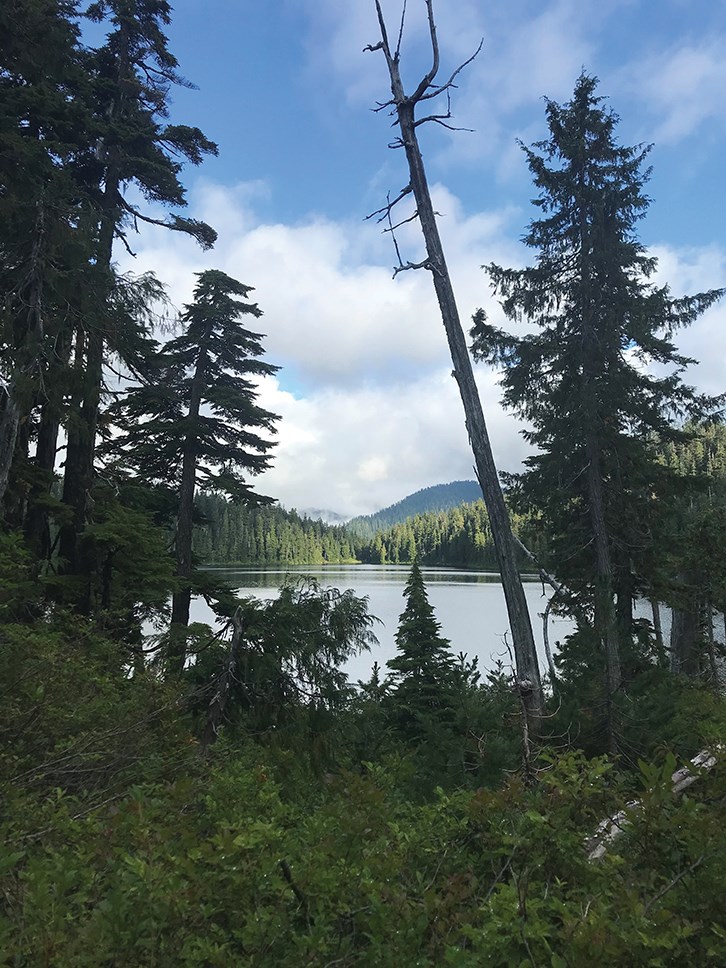Keeping taps flowing within the Chapman water system, the focus of an Emergency Operations Centre, hinges on the installation of a siphon to access more water from Edwards Lake, staff told the Sushine Coast Regional District (SCRD) board.
At its Sept. 22 meeting, the regional district board approved asking for expedited approval from the shíshálh Nation for access to an additional 526,000 cubic metres of water from Edwards Lake. As of Coast Reporter press time the SCRD had not received that approval.
In a report to the board, SCRD staff predicted the additional water from Edwards Lake would be enough to provide approximately 16 days of water supply to the Chapman system, at current use levels. Without that supply or significant rainfall by Oct. 13, Chapman Lake is predicted to reach a “critically low” point and the dependent water system would be at an “operational zero” level.
Once that level is reached, manager of utility services Shane Walkey said that staff were “not sure how we are going to be able to access the remaining 20 per cent in that existing [Chapman Lake] source. We are already in new territory on Chapman Lake…we have never been down that low before.”
'We are all affected'
Chief Administrative Officer Dean McKinley acknowledged that the request was “challenging” as it did not provide the Nation with a lot of lead time for review and processing. He said he felt confident that support could be secured.
“I don’t know why the request itself would be a challenge…we are all on the same water system. We are impacted equally with this water crisis and if something happens, we’re all affected equally as well,” he said.
Endorsement from the Nation is anticipated to hasten provincial approvals needed to install the siphon. Those are temporary amendments to the SCRD’s existing Parks Use Permit within Tetrahedron Provincial Park for the installation at Edwards and a new short-term water use approval from the Ministry of Forests.
At the meeting, the board also approved requesting emergency water from the Town of Gibsons. The Town responded on Sept. 26 with an offer of up to 1,000 cubic meters of water a day.
Installation aimed at Oct. 3
The SCRD bought the siphon hardware during last year's water crisis and has it on the Coast. At the meeting, the board approved spending up to another $350,000 for helicopter transport and installation of the siphon that is made up of six parallel 200-metre runs of pipe as well as the costs to decommission and remove that equipment from the site in 2023. Also covered will be work to fulfill the permit requirements, including archaeological and environmental impact assessments. The money will come from the regional water service operating reserves.
Installation of the siphon system is being planned for as early as Oct. 3 and can begin operating as soon as it is assembled. Walkey noted that assembling the siphon before receiving the approvals to save on time, as suggested by Area A director Leonard Lee, was not possible. He explained due to the size of the components, they must be moved in sections and assembled on-site, and that the permits must be in place to do that work.
Why is Chapman at record low levels?
“Is there a change to how the watershed is functioning?” Area E director Donna McMahon asked staff. She stated her observation was that Chapman Lake water levels declined “exceptionally fast this year.”
Walkey responded that staff had observed a quicker lake drawdown this year, noticing water disappearing into dry ground areas as it flowed down the creek and increased moisture loss through evaporation.
“Frankly, we thought we were in a far better place this year,” McKinley said citing 2022’s wetter, cooler spring and lack of heat dome events. He said that only after the last short period of time with no rain staff realized that in the Chapman system “things aren’t OK at all, unless we take fairly drastic actions at Edwards and access emergency supplies from Gibsons.”



